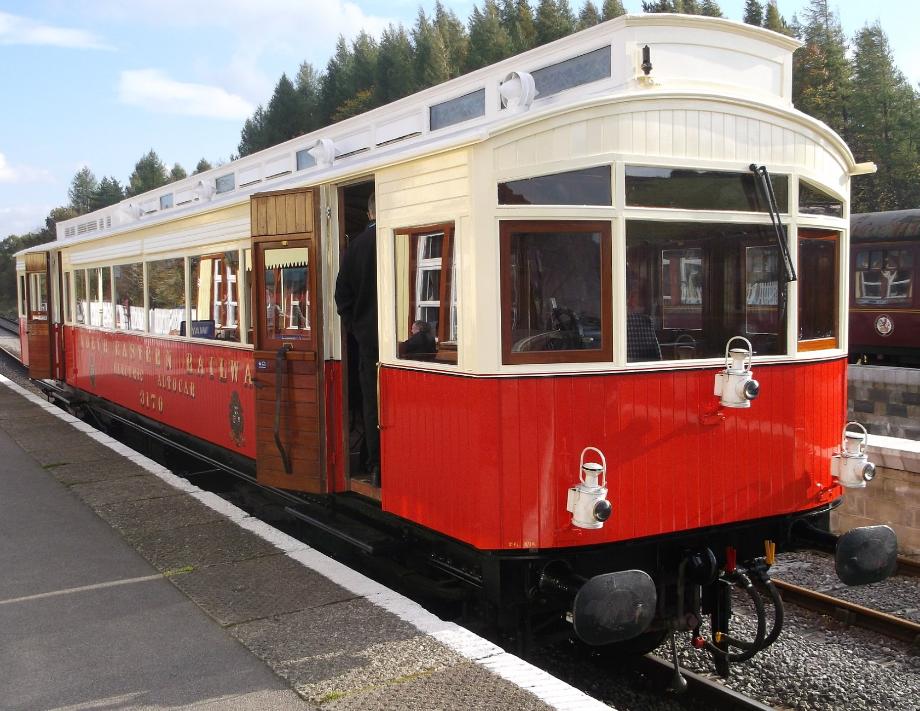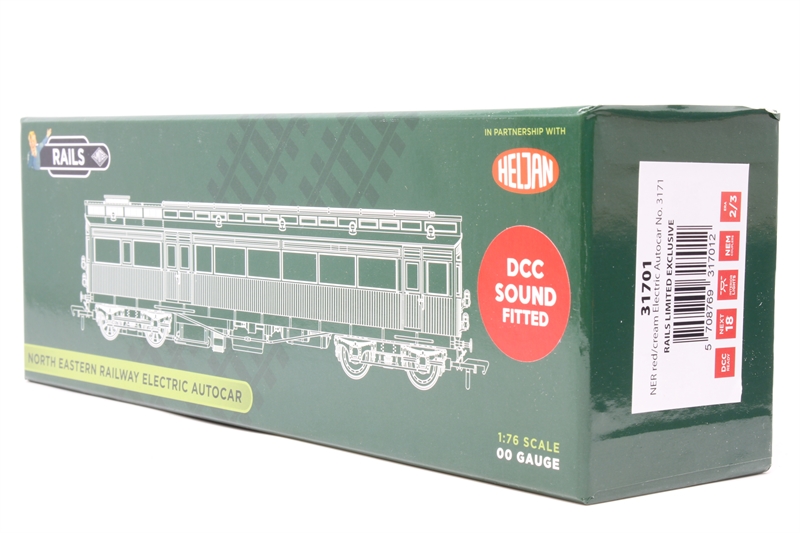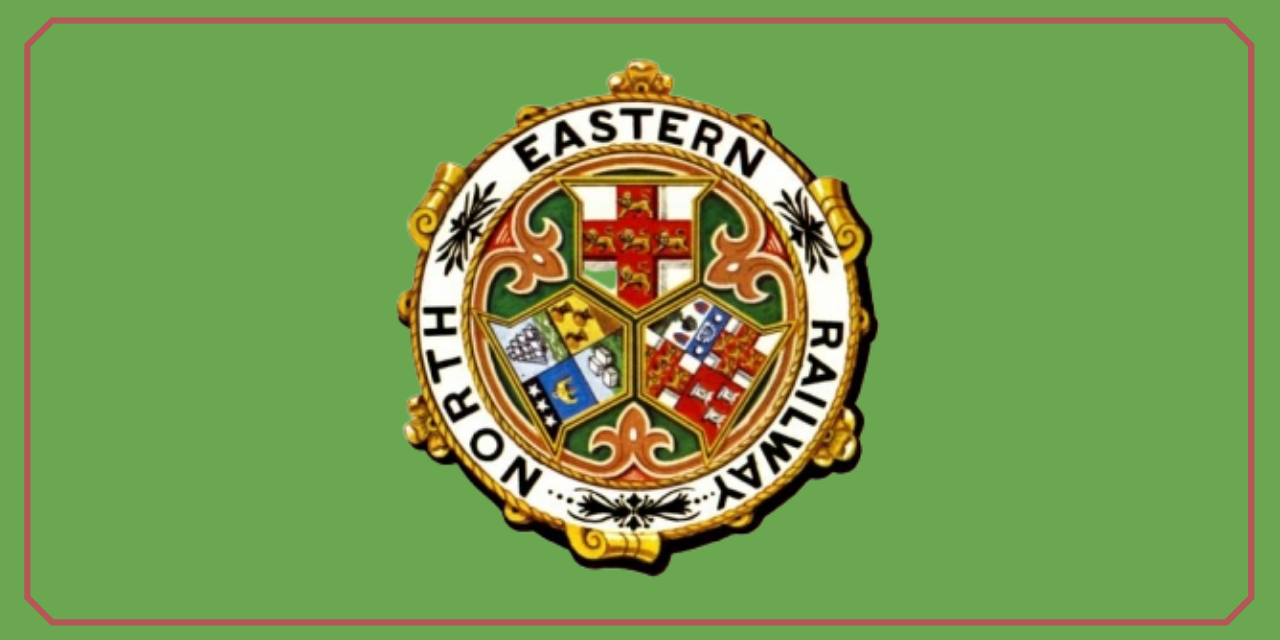Petrol-Electric Autocar NER Profile and Models

3170 at Bolton Abbey in October 2018. ©James Dagger
|
The 1903 Petrol Electric Autocars were built by the North Eastern Railway in 1903 at their carriage works in York. These were powered by petrol engines which generated electricity for two traction motors which were mounted on the bogie underneath. This means of powering a railway vehicle was pioneering and would eventually be developed into the diesel-electric technology that powered and powers many locomotives worldwide. Maximum speed was only 36 mph but acceleration and braking to and from this was reported to be brisk, taking around 30 seconds.The railcars worked briefly on Teesside, then in Yorkshire for the rest of their working lives, on lines round Scarborough, Harrogate and Selby, finally being withdrawn by 1931. The body of no. 3170 was used as a holiday home near Kirbymoorside in North Yorkshire for 70 years and was bought by a railway enthusiast in 2003. A trust was formed to restore the vehicle and a trailer coach to form an Edwardian multiple unit that will be twice as old as most of the (ex-BR) DMUs on other heritage railways. |
|
|
Type of Unit |
Petrol-Electric Autocar |
|
Builder |
NER York Carriage Works |
|
Build Dates |
1903 |
|
Total Built |
2 |
|
Coaches Per Unit |
Single Car |
|
Power Output |
92hp |
|
Top Speed |
36 mph |
|
Passenger Capacity |
52 seats |
|
Operated By |
North Eastern Railway LNER |
|
Main Duties |
Local Passenger |
|
In Service Until |
1931 |
|
Surviving Examples |
1 |



 NER - North Eastern Railway
NER - North Eastern Railway
 LNER brown
LNER brown